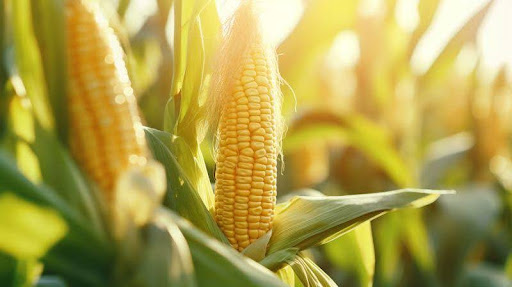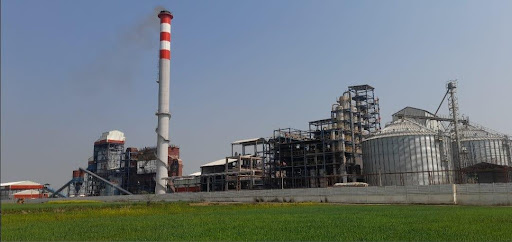
Introduction
With the rising demand for renewable energy sources and sustainable fuel alternatives, ethanol production has gained significant momentum worldwide. Ethanol, also known as bioethanol, is a biofuel commonly used as a renewable alternative to fossil fuels. One of the most popular feedstocks for ethanol production is maize (corn), primarily due to its high starch content, wide availability, and suitability for large-scale production.
In the maize-to-ethanol fermentation process, enzymes play a crucial role by facilitating the conversion of maize starch into fermentable sugars, which are then transformed into ethanol by yeast. This enzymatic process significantly enhances the efficiency and sustainability of ethanol production.
In this article, we will explore the various enzymes used in maize-to-ethanol fermentation, their functions, and how their application contributes to higher ethanol yields. We will also discuss the benefits of enzymatic fermentation for ethanol producers, the environment, and consumers.
What Is Maize-to-Ethanol Fermentation?
Maize-to-ethanol fermentation is a biochemical process that converts maize starch into ethanol. The process involves the following main steps:
Milling – The maize kernels are ground into a fine powder to increase the surface area for enzyme action.
Liquefaction – The ground maize is mixed with water to form a slurry, and enzymes are added to break down the starch into shorter chains of carbohydrates (dextrins).
Saccharification – Further enzymatic action breaks down the dextrins into simple sugars, primarily glucose.
Fermentation – Yeast is added to the mixture to convert the glucose into ethanol and carbon dioxide.
Distillation – The ethanol is separated from the mixture and concentrated for use as fuel or other applications.
Importance of Enzymes in Ethanol Production
Enzymes are biological catalysts that speed up chemical reactions without being consumed in the process. In maize-to-ethanol fermentation, enzymes are essential because they break down starch into fermentable sugars, which yeast can then convert into ethanol. Without enzymes, this process would be inefficient and yield minimal ethanol.
There are several types of enzymes used at different stages of the maize-to-ethanol process, each with a specific role in ensuring the efficient conversion of starch into sugars and ultimately into ethanol. These enzymes allow ethanol producers to achieve higher yields, reduce energy consumption, and operate more sustainably.
Types of Enzymes Used in Maize-to-Ethanol Fermentation
1. Alpha-Amylase (Liquefaction Enzyme)
The first major enzyme used in maize-to-ethanol fermentation is alpha-amylase, which plays a crucial role in the liquefaction stage of the process. Alpha-amylase breaks down large starch molecules into shorter chains of carbohydrates, known as dextrins. This process is essential for preparing the starch for further breakdown into fermentable sugars.
During liquefaction, the maize slurry is heated, and thermostable alpha-amylase is added to hydrolyze the starch. Thermostable alpha-amylase is designed to withstand the high temperatures required for liquefaction, allowing for efficient starch breakdown even under extreme conditions. By breaking down the starch into smaller molecules, alpha-amylase prepares the substrate for the next enzymatic step, known as saccharification.
2. Glucoamylase (Saccharification Enzyme)
The second key enzyme used in maize-to-ethanol fermentation is glucoamylase, which is responsible for breaking down dextrins into glucose during the saccharification stage. Glucoamylase is highly specific, cleaving individual glucose units from the dextrin chains, ultimately producing simple glucose molecules.
Glucoamylase ensures that the maximum amount of fermentable sugars is produced from the maize starch, optimizing the yield of ethanol. This enzyme works best under specific temperature and pH conditions, and its activity is essential for ensuring that enough glucose is available for yeast fermentation.
By converting the majority of the starch into glucose, glucoamylase plays a crucial role in increasing the overall efficiency of maize-to-ethanol fermentation.
3. Protease (Protein Hydrolysis Enzyme)
While starch is the primary component of maize, maize kernels also contain some proteins. During fermentation, proteins can interfere with yeast performance by creating nutrient imbalances or inhibiting yeast growth. To address this, protease enzymes are often added to break down proteins into smaller peptides and amino acids.
Proteases enhance the nutritional environment for yeast, ensuring that yeast can grow optimally and convert glucose into ethanol efficiently. In addition to improving yeast health, protease enzymes help reduce foam formation and increase the fermentation rate.
By adding proteases to the fermentation process, ethanol producers can improve the overall efficiency of fermentation and reduce production downtime caused by slow yeast growth or nutrient deficiencies.
4. Xylanase and Hemicellulase (Fiber-Degrading Enzymes)
Although maize primarily consists of starch, it also contains some fiber in the form of hemicellulose. Fiber is not as easily broken down as starch, but it can interfere with the fermentation process by increasing the viscosity of the mixture and limiting access to fermentable sugars.
To address this, xylanase and hemicellulase enzymes are sometimes added to maize-to-ethanol fermentation. These enzymes break down the fiber components, reducing viscosity and allowing for better mixing and mass transfer in the fermentation tank.
By reducing the presence of undigested fiber, xylanase and hemicellulase help ethanol producers achieve more uniform fermentation, higher ethanol yields, and more efficient use of feedstock.
5. Beta-Glucanase (Viscosity-Reducing Enzyme)
Viscosity issues can arise during the maize-to-ethanol fermentation process, particularly during the liquefaction and saccharification stages. High viscosity can make it difficult to maintain proper mixing in the fermentation tank, which can lead to inconsistent fermentation and reduced ethanol yields.
Beta-glucanase enzymes are often used to reduce viscosity by breaking down beta-glucans, which are polysaccharides found in maize fiber. By reducing the viscosity of the mixture, beta-glucanase improves the flow properties of the fermentation medium, ensuring better yeast access to sugars and promoting more uniform fermentation.
6. Cellulase (Fiber-Breakdown Enzyme)
Although maize is not particularly high in cellulose, there are some fiber components in the maize kernel that contain cellulose, a complex carbohydrate that cannot be digested by most enzymes. However, with the use of cellulase enzymes, the small amount of cellulose present in the maize feedstock can be broken down into fermentable sugars.
While the contribution of cellulose to the overall ethanol yield is minimal, cellulase enzymes help to improve the efficiency of the fermentation process by breaking down any residual fiber and freeing up more sugars for fermentation.
Benefits of Using Enzymes in Maize-to-Ethanol Fermentation
Enzymes offer several advantages in the maize-to-ethanol fermentation process, making them an essential component of modern ethanol production. Here are some of the key benefits of using enzymes:
1. Increased Ethanol Yields
The primary benefit of using enzymes in maize-to-ethanol fermentation is that they significantly increase ethanol yields. By efficiently breaking down starch into fermentable sugars, enzymes ensure that a higher proportion of the maize feedstock is converted into ethanol. This results in more ethanol being produced from each batch of maize, improving the profitability of the production process.
2. Energy Savings
Enzymes, particularly thermostable alpha-amylase, allow for more efficient liquefaction at lower energy inputs. By using advanced enzyme formulations, ethanol producers can reduce the energy required to heat the maize slurry during liquefaction, leading to cost savings and a smaller environmental footprint.
3. Improved Fermentation Efficiency
Enzymes like protease, beta-glucanase, and cellulase improve the overall efficiency of the fermentation process by ensuring optimal yeast health, reducing viscosity, and breaking down fiber. These improvements result in faster fermentation times, more uniform ethanol production, and fewer mechanical issues during production.
4. Environmental Sustainability
Enzymes are biodegradable and non-toxic, making them an environmentally friendly alternative to chemical additives. By using natural enzymes instead of harsh chemicals, ethanol producers can reduce their environmental impact while improving the sustainability of their operations.
5. Reduced Processing Time
By speeding up the breakdown of starch and other components in maize, enzymes help reduce the overall processing time required for ethanol production. This enables producers to run more fermentation cycles in a given timeframe, boosting productivity and increasing output.
The Role of The Catalysts Group in Maize-to-Ethanol Fermentation
The Catalysts Group is a leader in providing advanced enzyme solutions for ethanol production, including maize-to-ethanol fermentation. By offering a range of enzyme formulations designed to optimize starch conversion, improve yeast performance, and enhance fermentation efficiency, The Catalysts Group helps ethanol producers maximize yields and reduce costs.
Their enzymes are tailored to meet the specific needs of the maize-to-ethanol process, ensuring consistent performance, high ethanol yields, and a sustainable production process. Whether you're looking for alpha-amylase, glucoamylase, protease, or fiber-degrading enzymes, The Catalysts Group offers solutions that can help you optimize your ethanol production process.
Conclusion
Enzymes are an indispensable component of modern maize-to-ethanol fermentation, helping to improve ethanol yields, reduce energy consumption, and streamline the overall production process. By breaking down starch into fermentable sugars, enzymes ensure that ethanol producers can make the most of their feedstock while minimizing waste and environmental impact.
The Catalysts Group's enzyme solutions offer ethanol producers a powerful tool for optimizing maize-to-ethanol fermentation, making it more efficient, sustainable, and profitable. Whether you're a seasoned ethanol producer or new to the industry, enzymes provide the key to unlocking the full potential of maize as a feedstock for bioethanol production.
Recent Posts

Challenges in Rice to Ethanol Fermentation and How to Overcome Them
Rice is one of the most important staple crops globally, particularly in Asia, where it constitutes a significant portion of daily food intake. However, rice also has tremendous potential as a feedstock for ethanol production due to its high starch content.

Uses of Enzymes in Grain to Ethanol Fermentation: A Comprehensive Guide
Ethanol production through the fermentation of various feedstocks has gained considerable attention as a renewable energy source. Among the many feedstocks, grains such as corn, wheat, rice, barley, and sorghum play a crucial role due to their high starch content, which can be effectively converted into ethanol.

Role of Enzymes in Molasses to Ethanol Fermentation
The process of producing ethanol from molasses is a well-established method in the alcohol and fermentation industry. Molasses, a by-product of sugar production, is a highly suitable feedstock for ethanol production due to its rich sugar content. Enzymes play a critical role in the fermentation process, ensuring efficient conversion of sugars into ethanol.
Catalysts Connect
Keep up to date with our latest news and analysis by subscribing to our regular magazine and newsletter

Post a comment
Your email address will not be published.